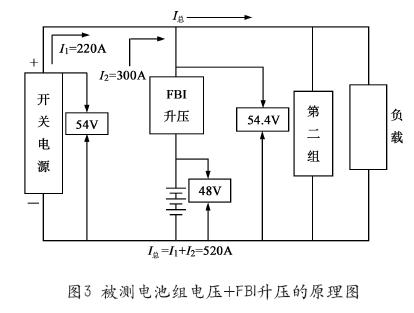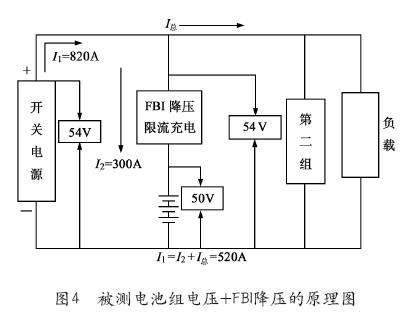大功率的科士达UPS电源一般都是双转换在线式的。这两个变换器是串联结构,一旦一个出现故障,即使市电正常也不能将电送到负载。
为此,这种科士达UPS电源都配有静态旁路开关,连接到旁路交流电源。一旦出现以上的情况,静态开关导通,将旁路交流电源送给负载,保证负载的连续运行。为了保证这种切换过程是无间断的,也就是需要在一段时间内实现两路电源(逆变器的输出和旁路交流电源的输出)的重叠供电。
两路电源同时给一个负载供电期间,他们之间必然会有环流,这种环流是非常可怕的,可以造成两路电源中的一路过载。
为了控制这个环流,逆变器的输出电压正常运行时是与旁路交流电源同步和锁相的,这样就会出现逆变器的输出电压的频率是随旁路交流电源的频率变化的。
这就是科士达UPS电源的频率漂移。当然这种频率变化只能在负载能够允许的范围内,一旦旁路交流电源的频率超出了负载能够接受的范围,逆变器的输出就不会再与旁路交流电源同步和锁相了,这时的逆变器输出电压是有内部晶振来控制的。但晶振的温度特性比较敏感,造成逆变器的输出频率也会出现一些细微的漂移,但这个漂移通常负载都能够接受。
数据中心行业组织如绿色网格协会强烈建议企业使用新的多模式UPS系统技术,使其运行效率达到98%到99%,取代运行效率为93%至95%传统的单模式UPS。目前,大约50%的大型科士达UPS电源系统制造商采用具有快速传输逻辑的多模技术。这种类型的科士达UPS电源很可能在未来五年内得到显著增长。
High-power Corstal UPS power supply is generally Dual-Conversion online. These two converters are in series. Once one of them fails, it is impossible to send electricity to the load even if the power supply is normal.
To this end, the Kosta UPS power supply is equipped with static bypass switch, connected to the bypass AC power supply. Once the above situation occurs, the static switch is turned on and the bypass AC power supply is sent to the load to ensure the continuous operation of the load. In order to ensure that the switching process is uninterrupted, it is necessary to realize the overlapping power supply of two power sources (the output of inverters and the output of bypass AC power supply) in a period of time.
When two power sources supply a load at the same time, there will inevitably be a circulating current between them. This circulating current is very terrible, which can cause one overload in the two power sources.
In order to control the circulating current, the output voltage of the inverter is synchronized and phase-locked with the bypass AC power supply in normal operation, so that the frequency of the output voltage of the inverter varies with the frequency of the bypass AC power supply.
This is the frequency drift of Kosta UPS power supply. Of course, this kind of frequency change can only be within the allowable range of the load. Once the frequency of bypass AC power exceeds the acceptable range of the load, the output of the inverter will no longer be synchronized and phase-locked with the bypass AC power supply. At this time, the output voltage of the inverter is controlled by internal crystal oscillation. However, the temperature characteristic of crystal oscillator is sensitive, which results in slight drift of output frequency of inverters, but this drift is generally acceptable to load.
Data center industry organizations such as Green Grid Association strongly recommend that enterprises use new multi-mode UPS system technology to achieve 98% to 99% operational efficiency, instead of the traditional single-mode UPS with 93% to 95% operational efficiency. Currently, about 50% of the large Kosta UPS power system manufacturers adopt multimode technology with fast transmission logic. This type of Corstal UPS power supply is likely to grow significantly in the next five years.
什么是多模科士达UPS电源系统?
多模UPS系统为数据中心运营商提供了在两种运行模式之间进行选择的能力:双变换模式可以提供优质的电源保护,而多模或“ecomode”(经济模式)提供高效的运行效率。当用户选择多模式作为默认运行模式以达到效率的98%到99%时,如果在科士达UPS电源输入上检测到电源异常,则UPS系统将在不到两毫秒的时间内自动转移到高级保护模式。在美国,对IT关键负荷有害的电力异常通常只占业务运行时间的3%,因此全年的运营模式之间的转换机率很有可能是最小的。
双变换模式是数十年来在大型科士达UPS电源系统中的典型的电源保护模式,但其也有显著的弱点,那就是运行效率始终在93%至95%的范围内。如今,用户要求更高的UPS运行效率和更低的总体拥有成本(TCO),并且不能影响足够的电力保护。这就是多模UPS的关键所在。
调研说明书构Frost&Sullivan的一项研究显示,企业的一个空间50,000平方英尺的数据中心在10年内使用多模UPS系统,并在大多数时间运行在多模方式下,可以节省310万美元的成本。这些成本主要来自UPS系统减少的能源消耗,以及用于克服科士达UPS电源散热的通风和空调(HVAC)系统的能耗。随着电力成本的持续上涨,多模UPS的节省的电能将随着时间的推移而变大。
TCO以外的其他多模优点
多模UPS除TCO之外还提供了其他优点,并降低了能耗。该技术提供了一个“智能”输入功率监控高手,其中UPS将记录导致从多模转换到双变换模式的输入电源异常的数量和频率。过多或频繁的电源异常将使科士达UPS电源“锁定”多模式一段时间,从而使电力在一段时间内保持稳定。因此,多模科士达UPS电源系统可以对何时使用多模或双转换模式进行智能的实时逻辑决策,以最大限度地保护关键负载运行正常,而不牺牲运行效率。
多模科士达UPS电源系统的第二个优点是延长了部件寿命。在多模操作期间,许多UPS模块组件在低电流和低热范围下工作,从而延长使用寿命。其他组件如风扇,可以不运行。多模UPS的制造商预计许多组件的最短寿命延长一至两年。
多模科士达UPS电源系统的第三个优点是缓解输出故障。任何UPS输出短路或过载将很快通过上游的过流保护设备来处理,而UPS系统中没有任何内部的工作模式进行调剂。这些科士达UPS电源输出故障将直接加载在电源的源阻抗上,而不是加载在科士达UPS电源逆变电源,从而减少了故障损失。
Multimode UPS system provides data center operators with the ability to choose between two modes of operation: dual conversion mode can provide high quality power protection, and multi-mode or "ecomode" (economic mode) can provide efficient operation efficiency. When the user chooses multi-mode as the default mode to achieve 98% to 99% efficiency, the UPS system will automatically transfer to the advanced protection mode in less than two milliseconds if an abnormal power supply is detected on the input of Kosta UPS power supply. In the United States, power anomalies that are harmful to IT critical loads typically account for only 3% of business runtime, so the chances of switching between operating modes throughout the year are likely to be minimal.
Dual-conversion mode is a typical power protection mode in large Kosta UPS power supply system for decades, but it also has a significant weakness, that is, the operating efficiency is always in the range of 93% to 95%. Nowadays, users require higher UPS operation efficiency and lower total cost of ownership (TCO) and can not affect adequate power protection. This is the key to multimode UPS.
A study by Frost & Sullivan, a research brochure, shows that a 50,000-square-foot data center in an enterprise can save $3.1 million by using a multimode UPS system in 10 years and operating in a multimode mode mode mode mode mode mode mode mode mode mode most of the time. These costs mainly come from the reduced energy consumption of the UPS system and the energy consumption of the ventilation and air conditioning (HVAC) systems used to overcome the heat dissipation of the Kosta UPS power supply. With the continuous rise of power cost, the energy savings of multi-mode UPS will increase with the passage of time.
Multimode advantages other than TCO
Multimode UPS provides other advantages besides TCO, and reduces energy consumption. The technology provides a "smart" input power monitor master, in which UPS records the number and frequency of input power anomalies leading to multi-mode to dual-mode conversion. Excessive or frequent power supply anomalies will make the Corstal UPS power supply "locked" in multi-mode for a period of time, thus keeping the power stable for a period of time. Therefore, the multi-mode Costa UPS power supply system can make intelligent real-time logical decisions on when to use multi-mode or Dual-Conversion mode to maximize the protection of critical load operation without sacrificing operational efficiency.
The second advantage of the multimode Corstal UPS power supply system is that it prolongs the life of components. During multimode operation, many UPS module modules operate in low current and low heat range, thus prolonging service life. Other components, such as fans, may not run. Manufacturers of multimode UPS expect to extend the minimum life of many components by one to two years.
The third advantage of the multimode Corstal UPS power supply system is to mitigate output failures. Any short circuit or overload of UPS output will be quickly handled by upstream overcurrent protection devices, and there is no internal mode of operation in UPS system to adjust. These output faults of Corstal UPS power supply will be directly loaded on the power supply impedance, rather than on the Corstal UPS power supply inverters, thus reducing the loss of fault.
一些UPS生产制造商,如通用电气公司的关键电源业务,在其多模系统中设计了额外的独特功能,通用电气公司称之为eBoost技术。这些特征包括在经济运行模式下电源路径中使用线路电抗器,在该高效率模式下提供功率调节级别;具体来说,它可以减轻高频“浪涌”事件和较低频率的“环波”,从而最大限度地减少转换为双转换模式。这种电抗器的设计还允许将多个UPS模块到并行输出总线的电缆长度差异高达±25%。该电缆长度差异还提供了增强的地板布局设计的灵活性。一些其他UPS生产制造商必须将电缆长度差值保持在±10%,否则可能导致UPS功率下降或并联的UPS运行不正常。
多模UPS系统的运营费用(opex)的减少以及上述额外的优点,为数据中心用户在可预见的将来采用这种UPS技术提供了许多令人信服的理由。对于其他任务关键型和/或关键过程应用,也应考虑多模式UPS技术,特别是对于225kVA及以上的大功率应用,因为其能源消耗是一个关键问题。
科士达UPS电源持续扩大应用于企业内部以保护精密且不可断电的设备组件。由于科士达UPS电源的使用者不断成长,新旧型的科士达UPS电源也各自运作于厂办内,因此维护管理这些科士达UPS电源成为一个研究课题。由于网络的普及,科士达UPS电源与网络联机不像从前困难,使得IT管理者和IT员工能直接集中管理所有科士达UPS电源.本文将探讨如何通过系统管理所有科士达UPS电源,以及集中管理UPS的优点。
为了保护设备运作不断电,企业纷纷投资科士达UPS电源解决方案以确保商业运作不中断。然而简易安装UPS并不是最终解决方案,管理者需知如何管理控制这些系统,确保他们正常运作。而集中式科士达UPS电源管理系统的优点就是能立即了解UPS的状况,包括科士达UPS电源容量与位置、负载、电瓶是否需要充电以及科士达UPS电源的运作状况。如果能通过一个程序完全收集所有信息,并以简易操作的图形接口显示,另加上警告功能,那么管理者只要通过这个集中管理程序,就能够轻易管理上百台甚至上千台网络科士达UPS电源.比起从前一台一台检查UPS状况,集中管理效率得到大大提升。
1.科士达UPS电源与计算机串接:
可以在计算机上加装多端口卡以扩充RS232接口,或是将多台UPS统一连接至RS485,再连接到计算机的RS232接口。RS485适用于连接远距的UPS,但随着串接科士达UPS电源的数量增加,系统监控UPS的时间效率会随着改变─连接愈多台科士达UPS电源,系统监控UPS所需的时间就会愈长。
2.通过网络收集科士达UPS电源信息:
我们能以插入SNMP卡或安装科士达UPS电源软件来通过网络收集UPS信息,因此集中管理软件就必须兼具监控软件及SNMP卡联机的能力。一旦监控的点愈来愈多,网络流量就成为管理系统中的一大问题。为了避免网络流量壅塞,管理软件应该能够随时调整监控需时减少传送网络封包。毕竟,使得企业内部运作流畅才是第一要务。
通过科士达UPS电源管理软件提升效能,管理者能通过集中式科士达UPS电源管理规划电力问题发生时的保护动作。在电力问题结束后,管理可以一步步追踪并找出有问题的科士达UPS电源,分析电力事件的原因。在科士达UPS电源的保护之下,管理者对每一次发生的电力事件,会在第一时间被告知,并提供充分的信息让他知道如何处理设备。
管理者也能根据科士达UPS电源管理软件提供的科士达UPS电源状态、型号、负载、电池容量来安排UPS的优先级。例如,发生电源中断且电池容量低于30%时关闭程序启动,管理者能知道哪一个科士达UPS电源的负载已经超过80%,因此他能考虑是否要换一台更大容量的科士达UPS电源.集中化科士达UPS电源管理软件的优点不仅在保护不可断电的设备,同时也减少人力资源的浪费并且增加效率。
在数据中心中,阀控式密封铅酸蓄电池组作为备用电源在系统中的作用非常重要。铅酸蓄电池工作状态的稳定与否、性能好坏都与科士达UPS电源系统的输出稳定性和可靠性息息相关。蓄电池组容量监测研究的意义在于提高科士达UPS电源的利用率,实时在线监控蓄电池组的健康状态,提供高效率的电池管理,提高后备电源系统的稳定性和可靠性,同时可保障铅酸蓄电池的使用寿命、避免安全隐患及经济损失,减少人工成本。
定期对阀控式密封铅酸蓄电池(以下简称蓄电池)组进行容量测试,有利于掌握蓄电池组的工况,避免故障隐患的长期存在,保证供电系统运行中的可靠性。
Corstal UPS power supply continues to expand to protect precision and uninterruptible equipment components within the enterprise. As the users of Kosta UPS power supply are growing, the new and old Kosta UPS power supply are also operating in the factory, so the maintenance and management of these Kosta UPS power supply has become a research topic. Due to the popularity of the network, it is not as difficult as before for Kosta UPS power supply and network to be online, which enables IT managers and IT employees to directly centralize all Kosta UPS power supply. This paper will discuss how to manage all Kosta UPS power supply through the system, and the advantages of centralized management of UPS.
In order to protect the continuous power supply of equipment operation, companies have invested in Costa UPS power supply solutions to ensure that business operation is uninterrupted. However, simple UPS installation is not the final solution. Managers need to know how to manage and control these systems to ensure their normal operation. The advantage of the centralized Corstal UPS power management system is that it can immediately understand the status of UPS, including the capacity and location of Corstal UPS power supply, load, whether batteries need to be charged and the operation status of Corstal UPS power supply. If we can collect all the information through a program, display it with a simple graphical interface and add warning function, then managers can easily manage hundreds or even thousands of network Kosta UPS power supply through this centralized management program. Compared with checking UPS status from the previous one, centralized management efficiency has been greatly improved.
1. Corstal UPS power supply is connected with computer in series:
Multi-port card can be installed on the computer to expand RS232 interface, or connect multiple UPS to RS485, and then to RS232 interface of the computer. RS485 is suitable for long-distance UPS connection, but as the number of series Kosta UPS power supply increases, the time efficiency of system monitoring UPS will change with the change - the more Kosta UPS power supply is connected, the longer it will take for the system to monitor UPS.
2. Collect the UPS power supply information through the network:
We can insert SNMP cards or install Kosta UPS power software to collect UPS information through the network, so centralized management software must have both the ability of monitoring software and SNMP card online. Once there are more and more monitoring points, network traffic becomes a major problem in the management system. In order to avoid network traffic congestion, management software should be able to adjust monitoring time at any time to reduce transmission network packets. After all, making the internal operation of the enterprise smooth is the first priority.
Through the Corstal UPS power management software to enhance efficiency, managers can plan protection actions when power problems occur through centralized Corstal UPS power management. After the end of the power problem, management can step by step track and find out the problem of Kosta UPS power supply, and analyze the causes of power incidents. Under the protection of Kosta UPS power supply, managers will be informed of each power incident at the first time and provide sufficient information to let him know how to deal with the equipment.
Managers can also prioritize the UPS according to the status, model, load and battery capacity of the UPS provided by the COSTAR UPS power management software. For example, when a power outage occurs and the battery capacity is less than 30%, the shutdown program starts, and the manager can know which Corstal UPS power supply has a load of more than 80%, so he can consider whether to replace a larger Corstal UPS power supply. The advantages of centralized Corstal UPS power management software are not only to protect uninterruptible equipment, but also to reduce waste of human resources and increase. Efficiency.
In data center, VRLA batteries play an important role in the system as standby power supply. The stability and performance of lead-acid batteries are closely related to the output stability and reliability of Kosta UPS power supply system. The significance of battery capacity monitoring research lies in improving the utilization rate of UPS power supply, real-time on-line monitoring of battery health, providing efficient battery management, improving the stability and reliability of backup power supply system, ensuring the service life of lead-acid batteries, avoiding potential safety hazards and economic losses, and reducing labor costs.
Regular capacity testing of VRLA batteries (hereinafter referred to as VRLA batteries) is conducive to mastering the working conditions of the batteries, avoiding the long-term existence of hidden troubles and ensuring the reliability of the power supply system in operation.
根据联通动力维护规程,蓄电池组使用三年必须进行容量试验,使用六年后每年进行一次容量试验,准确地监测电池组的容量,确保在市电和电源设备出现故障时,蓄电池组能够保障通信设备续航的时间。
1 蓄电池组的容量测试方法
蓄电池组容量的测量,视情况不同可用下列三种方法进行测量。
(1)离线式测量法
在采用离线式测量法进行蓄电池的容量试验时,应按下述步骤进行:
①将充满电后的蓄电池组脱离供电系统静置1~24h,在环境温度为25±5℃的条件下开始放电;
②放电开始前应测量蓄电池的端电压,放电期间应测记蓄电池的放电电流、时间及环境温度,放电电流波动不得超过规定值的1%;
③放电期间应测量蓄电池的端电压及室温,测量时间间隔为:10h率放电30min、3h率放电20min、1h率放电5min。在放电末期要随时测量,以便准确地确定达到放电终止电压的时间;
④放电电流乘以放电时间即为蓄电池组的容量。蓄电池按10h率放电时,如果温度不是25℃时,则应将实际测量的容量按下式换算成25℃时的容量Ce:

(1)式中,t——放电时的环境温度(℃);
K——温度系数;
10h率放电时,K=0.006/℃
3h率放电时,K=0.008/℃
1h率放电时,K=0.01/℃
Cr——试验温度下的电池容量。
⑤放电结束后,要对蓄电池组充电,充入电量应是放出电量的1.2倍。
电池组离线放电原理图如图1所示。

利用离线式测量方法进行电池组容量试验时,应注意以下几个问题:
①电池组离线式容量试验,测试数据准确,电池组实际容量计算方便,便于了解电池组实际容量。但当该供电系统只剩下一组电池后备,系统备用电池供电时间明显缩短,且不清楚在线电池组是否存在质量问题;尤其使用六年以上的电池组,一旦市电中断,该电池组对通信设备放电保障风险系数增大。所以用此种方法对电池组进行容量试验时,要求柴油发电机组必须处于最佳工况状态,以确保发电机组、开关电源等设备正常运行;
②放电结束后的电池组充满电后再并入供电系统,此时与在线电池组间存在电压差,若操作不当将引起开关电源对并入的电池组进行大电流充放电,产生火花,易发生安全事故。为了解决打火花问题,必须调整开关电源输出电压,然后与充满电的电池组电压相等后进行并联浮充;
③利用离线式测量方法时,放电方式操作难度偏大,既要脱离电池组的正极电源线,又要脱离电池组的负极保险,尤其是脱离电池组负极保险时,需要特别小心并做好绝缘处理。操作不当引起负极短路,将造成系统供电中断和人身安全事故的发生。同时放电电池组通过假负载以热量形式消耗,浪费电能,增大了机房空调的制冷时间,影响机房设备运行环境,需要维护人员时刻守护,以免假负载高温引发通信供电设备故障;
④关电源直流输出电压为46.4V,使电池组直接对实际负荷进行放电至开关电源直流输出电压保护设置值。由于电池组放电电流大,应按电源维护规程考虑48V供电范围40~57V的最低供电低压门限,电池组至设备供电回路全程压降3.2V及电池单体放电最低1.8V的要求考虑。为了保证供电系统安全,所以带实际负载的放电电流和放电时间掌控较困难,对电池组容量评估不够准确,对电池性能测试存在不确定因素,尤其对使用3年以上电池组性能检测难以达到试验的预期效果。
(2)在线式测量法
在利用在线式测量法进行蓄电池组容量试验时,应按如下步骤进行:
①在供电系统中,关掉整流器或降低整流器输出电压后,由蓄电池组放电供给通信设备,在蓄电池组放电中找出蓄电池组中电压最低、容量最差的一只电池来作为容量试验的对象;
②恢复整流器至正常工作状态,对蓄电池组进行充电,等蓄电池组充满电后稳定1h以上;
③对①中放电时找出最差的那只电池进行10h率放电试验。放电前后要测记该只电池的端电压、温度、放电时间和室温。以后每隔30min测记一次,放电快到终止电压时,应随时测记,以便准确记录放电时间;
④放电时间乘以放电电流即为该只电池的容量。当室温不是25℃时,应按式(1)换算成25℃时的容量;
⑤放电试验结束后,用充电机对该只电池进行充电,恢复其容量;
⑥根据测记的数据绘制放电曲线。
在利用在线式测量法进行蓄电池组容量试验时,应注意以下几个问题:
①若两组电池的单体电池都有失容、落后等质量问题,其放电至输出保护值的时间,不易被维护人员及时发现,此时可能后备电池组容量所剩无几,因此该放电方式比离线放电方式不安全系数更大。同时由于放电深度有限,对电池组的测试的目的无法达到,关键是在全容量放电的实践中会经常发现有些单体电池在放电前期电压正常,但到中后期,有些落后电池才开始逐步暴露出来;
②这一部分落后单体电池,由于放电深度不够而没有被及时发现,此放电方式只能大致评估电池组容量,而无法准确检测具体放电多长时间。同时两组电池组间放电电流不完全均衡,各电池组将根据自身情况自然分摊系统的负载电流。落后电池组内阻大、放电电流小,而正常电池组内阻小、放电电流大。这就造成某些落后电池因放电电流不够大而无法暴露出来,达不到进行电池组放电性能质量检测目的。
(3)单组全在线式节能容量试验很明显,离线式测量法和在线式测量法,在实际运用时,存在重大缺陷:
•工作量太大,耗时耗力,一年内无法保证对所有的蓄电池组进行一轮放电试验,亦即蓄电池组得不到及时有效的维护;
•这两种测量方法追求的是结果而不是过程,所以当发现该组蓄电池有质量问题时,可能问题在很早以前就存在了。也就是说,即使非常严格地按照维护规程进行着维护,仍然无法确保在用蓄电池的性能良好、保证通信网络的顺畅运行;
•离线全容量放电测试存在严重的安全隐患问题,操作不当会对系统供电安全造成严重的影响,同时严重浪费能源,而且放电结束后被测蓄电池组和系统存在巨大的压差,回接系统相当困难且危险。而一些单位采用定期的在线式放电测试,虽然这种在线式放电测试相比离线放电测试,操作较简单,也没有电能的浪费和电池组回接困难的问题。但是在线式放电测试是将系统电压降低,系统上所有的电池组同时对实际负载放电,如果市电停了,系统上就没有满容量的电池组,同样存在巨大的安全隐患问题。而在线式放电测试的放电深度不够,且放电不恒流,不能准确的测试出蓄电池的剩余容量,达不到检测蓄电池性能的目的,给系统维护留下安全隐患。
解决这个难题的方法在于采用安全节能的“蓄电池组全在线容量试验”。单组全在线式节能容量试验可以避免上述缺陷,具有良好的实用价值。全在线式节能容量试验的原理图如图2所示。

所谓“蓄电池组全在线容量试验”,是指在被测电池组和通信设备工作电源之间串联一套“电池组全在线放电安全节能维护系统FBI”,让被测电池组相对另一组处于浮充状态的电池组具有略高电位的趋势,并通过FBI系统的控制以使被测电池组能够以恒定电流或恒定功率对在线负载设备进行供电,随着被测电池组电压的下降,FBI系统自动实时升压补偿,以保持被测电池组所在支路电压(被测电池组电压+FBI升压)始终保持与另一组电池等电位,但始终具有略高电位的趋势,以使被测电池组能够持续在线供电,当被测电池组以恒定电流或恒定功率在线放电到预先设定的截止电压后,FBI系统自动引导整流器在线对被测电池组充电恢复,随着被测电池组电压的上升,FBI系统自动随时降压补偿,以保持被测电池组所在支路电压(被测电池组电压+FBI升压)始终保持与另一组电池等电位,直至被测电池组充电恢复完成。在此被测电池组全在线放电和充电过程中,另一组电池始终保持浮充状态。采用FBI,彻底改变了以往蓄电池放电容量测试模式,解决了离线式测量法和在线式测量法的种种弊端。被测电池组电压+FBI升压的原理图如图3所示。当然也可以采用被测电池组电压+FBI降压的模式。被测电池组电压+FBI降压的原理图如图4所示。


下面简述全在线式节能容量试验的充放电过程和全在线充、放电设备串接电池组的操作过程。
①全在线充、放电过程
被测电池组的正极与全在线(充)放电设备串联,不需要调整开关电源的浮充电压值,使被测电池组所在支路的电压略高出开关电源输出或另一组电池的浮充电压,这样使该电池组对实际负荷进行放电,放电过程中被测电池组电压随着放电时间的变化而逐渐下降,通过全在线(充)放电设备进行自动电压补偿调整,保证被测电池组始终保持恒定电流或恒定的功率进行放电,当电池组放电终止即电压、容量、时间和单体电池电压达到预期所设置的放电门限值时,放电试验自动结束。自动转入对被测电池组的全在线充电恢复过程,以消除两组电池之间存在的电压差,并引导在线开关电源输出,经过充电、等电位控制保护电路自动对被测放电后的电池组进行限流充电,自动完成在线等电位连接,恢复系统的正常连接后,全在线充、放电设备退出,结束蓄电池组充电恢复等电位连接过程。实现了该电池组在线充、放电试验目的和了解该电池组的续航能力。
②全在线充、放电设备串接电池组的操作过程拆、接线只在电池组正极,无须拆电池组负极,只在负极接一根放电设备的工作电源线,操作过程不存在短路危险,充、放电全部在线自动运行。充、放电电流保持恒定。测试记录自动进行。被测电池组按0.1C10率直接对负载放电和对电池组充电,无须看守,大大减轻工作强度,提高工作效率。
图5为某通信机房-48V直流供电系统3000Ah电池(两组)的全在线式节能容量试验现场。
图5中,有两组-48直流供电系统3000Ah电池,每组用全在线设备单独对负载放电试验做具体操作。首先将6个*监测模块连接到该组电池各单体上(每个*监测模块可以监测4只单体电池电压),全在线设备控制系统上设定4个放电截止门限:单体电池截止电压门限1.8V;电池组截止电压门限43.2V;放电容量门限3000Ah;放电时间门限10h(任一门限达到,放电都将停止)。设定放电电流为300A,核对所有设置参数正确后进行放电。用直流钳形表检测该组电池的放电电流由0A逐步上升到300A,保持300A恒定,该组电池电压如平常放电一样逐步下降,串接全在线设备的电压逐步上升,整个放电支路在线电压保持比系统浮充电压54V高0.3~0.6V即54.4V以上。检测另一电池组没有放电,仍然保持浮充54V工作状态。此时开关电源的输出电压保持在54V,而开关电源模块输出电流总和下降了300A。由于放电方式是对实际负荷用电,放电过程中全在线设备没有任何发热现象,安全可靠。当放电时间达到10h,到达设定某个参数的门限值时,全在线设备停止放电。自动转入充电程序,直到两组电池等电位后,充电结束,拆下全在线充、放电设备,供电系统运行正常。
在线设备串联单组电池的放电节能方式,是将电池组中的电能直接释放到实际负载中,不像离线放电是将电能以热量形式消耗,所以串联在线设备对电池组放电方法具有节能效果。
传统离线放电的能源浪费Q=电池组电压U(V)×电池组放电电流I(A)×放电时间t(h)×放电电池组数N;如容量为3000Ah两组蓄电池,放电电流为300A,按10h放电的能耗估算为:
Q=U×I×t×2=48V×300A×10h×2=288kWh
全在线设备的节能总电量P=离线放电的能耗Q+开关电源少输出的能量W
开关电源少输出的能量
W=开关电源输出电压×放电电流×放电时间×电池组数=54V×300A×10h×2=324kWh
则P=288+324=612(kWh)
按照电费0.8元/kWh计算,一个-48直流供电系统中的两组3000Ah电池容量试验可以节约电费约489.6元。
2 蓄电池组容量测试一般周期
①每年应做一次核对性放电试验(对于UPS使用的密封蓄电池,宜每季一次),放出额定容量的30%~40%;
②对于2V单体的电池,每三年应做一次容量试验,使用六年后应每年一次。对于UPS使用的6V及12V单体的电池应每年一次;
③-48V系统的蓄电池组,放电电流不得大于0.25C10。
3 结束语
上述三种蓄电池的容量试验方法,是日常维护中常用的方法,但无论哪种方法,在容量测试期间,通信安全都会受到一定的威胁。因此在做容量试验时要防止市电停电,备用发电机组应处于良好状态。
有条件的,应采用专业蓄电池容量测试设备进行放电、记录、分析,以提高测试精度和工作效率。
科士达YDE2060 UPS电源
科士达YDE1200 UPS电源
科士达YDC9101S UPS电源
科士达YDC9101H UPS电源
科士达YDC9102S UPS电源
科士达YDC9102H UPS电源
科士达YDC9103S UPS电源
科士达YDC9103H UPS电源
科士达YDC9106H UPS电源
科士达YDC9110H UPS电源
科士达YDC9106S UPS电源
科士达YDC9110S UPS电源
科士达YDC9310H UPS电源
科士达YDC9315H UPS电源
科士达YDC9320H UPS电源
科士达YDC3310 UPS电源
科士达YDC3315 UPS电源
科士达YDC3320 UPS电源
科士达YDC3330 UPS电源
联系人:王培
手机:15210159464
电话:400-7655-808
邮箱:15210159464@126.com
地址: 北京市大兴区旧桥路25号院3号楼2层205